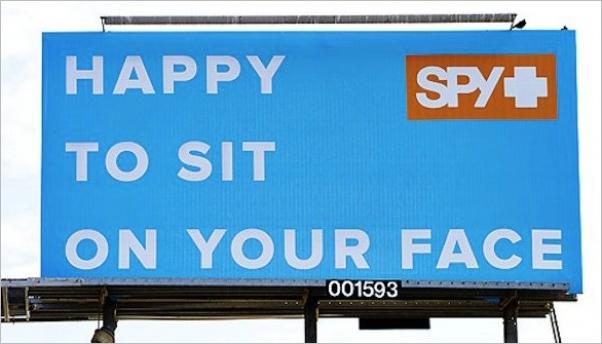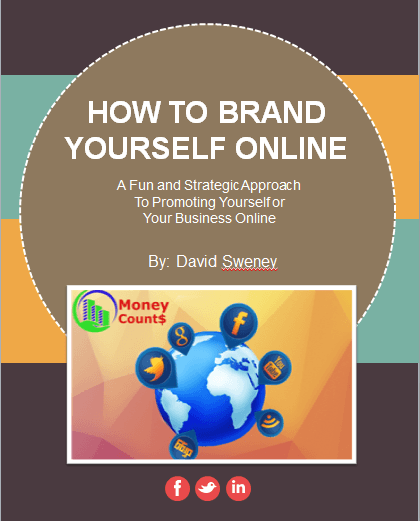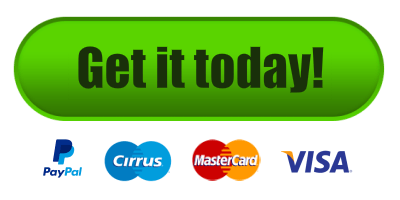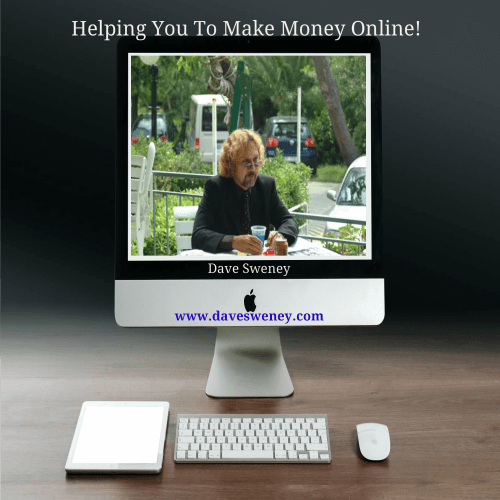INTRODUCTION
Table of Contents
- INTRODUCTION
- HOW DO BIG COMPANIES USE BRANDING
- Branding from another perspective…
- Biggest Branding Fiascos
- Lesson 1: There’s a fine line between being different and offensive
- Lesson 2: In a socially connected world, hiring the right people is more important than ever
- Lesson 3: Double check your work. Then… check it again.
- Lesson 4: Like it or not, your message is global.
- Lesson 5: Honesty is (now more than ever) always the best policy
- HOW CAN WE TAP INTO THE BEST PRACTICES OF BIG COMPANIES
- Toms Shoes
- GoPro
- Uber
- Airbnb
- Under Armour
- Beats
- Virgin America
- MORE TRAINING FOR YOU
- CONCLUSION
- FINAL POINT(S)
I had so much fun writing the last lighter side post on branding that I just had to carry it a little further today!
In case you are not aware of this series, it is a regular type of post I make here that is meant to be a quick read with a valuable lesson.
These are generally focused on one aspect of online marketing, and try to provide some entertainment, be educational, and engaging all at the same time.
Today’s subject of branding was covered in a limited manner yesterday ( you can read it HERE) and today I want to look at what the big companies are doing when it comes to branding.
In going through the research for the post, I could see many ways that those of us in the online marketing business could adapt some of the tools they use for our own programs…
I also found out about some of the pitfalls of NOT branding in a clear and transparent manner and the consequences for companies when this was the case…
More lessons!
Now let’s see exactly what I found!
HOW DO BIG COMPANIES USE BRANDING
To get an idea how enthusiastic big brands are about opening up about how they do business, I have added a very interesting and popular TED talk for you today…
The presenter is who you may know from some of his other independent productions that have been massively successful, in spite of the relative size of his company compared to the big Hollywood names…
Branding from another perspective…
[videoframes src=”” skin=”17″ controls=”1″ headline_text=”The Greatest TED talk ever sold!” headline_color=”#000000″ headline_size=”22″]
The interesting points for me were the reluctance of the companies to have how they market and brand their products shown to the public for all to see…
In fact, many of the company executives approached turned him away immediately…They had NO interest in showing John Q. Public how they do business.
Little wonder, because this guy has a habit of making the subjects of his films (often companies) appear in a less than flattering light when it comes to some of the practices commonly used in whatever niche he is exploring…when he puts his inquisitive camera in front of millions of viewers…
This unflattering picture meant that even some of the “smaller” big companies he approached had no interest. That surprised me, because if you are doing business in an ethical manner, why would you not want to get your brand out there through his film?
Why indeed…
It is a fact that in the world of branding and marketing, there are often a lot of deceptive or less than forthright methods and gimmicks used to sell stuff…
These companies are big enough that they can manipulate the game in a way that you or I cannot. Unfortunately, their little secrets often manage to gain freedom nonetheless, and once free, they can never be hidden again…
It is up to us to find out about them many times because the politicians have been paid to make sure they are protected. Often it is only after some negative experience that their practices get exposed…
Biggest Branding Fiascos
It is true that we can learn from other’s mistakes. Over the years there have been some doozies too! Let’s look at a few of the biggest ones…
Below is an excerpt from a crazy egg blog found at
CRAZY EGG POST ON BRANDING BLUNDERS
The post points out 5 lessons to be learned from branding and marketing mistakes and provides examples of each. These are good lessons for all of us, not just the big companies…
Lesson 1: There’s a fine line between being different and offensive
Getting people’s attention isn’t easy these days.
Efforts to stand out by being shocking and controversial sometimes pay off and other times, not so much.
British fashion brand Harvey Nichols made one of the biggest branding mistakes of 2012 after they tried to visualize the popular phrase ‘try to contain your excitement’ with ads showing models peeing themselves.
The ad was surely different and sparked interest but it, unfortunately, backfired.
Another brand on AdWeek’s list, Spy Sunglasses tried to be witty and humorous with their copy when they plastered the slogan ‘Happy to Sit on Your Face’ on billboards. The billboard, slated for a six-month stint, was taken down after only one month.
Last, but certainly not least, in the offensive category is a PETA ad claiming that going Vegan will turn your boyfriend into a “Tantric porn star.”
Domestic violence groups and others failed to see the humor in this portrayal of men with a veggie-fueled sex drive battering and bruising their girlfriends.
Bottom line: You have to be different to gain attention but make sure you know the line between different and offensive.
Lesson 2: In a socially connected world, hiring the right people is more important than ever
Here at The Daily Egg, we talk a lot about the power of social media and how beneficial it can be for a business.
However, as Spider-Man would say, with great power comes great responsibility.
The truth is, you can’t stop social media and you can’t control it. Your employees can torpedo your brand in a millisecond.
It’s never been more important to have the right people working for you.
Burger King had to run an internal investigation and deal with international-scale embarrassment after an employee posted the following picture on the anything-goes forum 4chan with the caption “This is the lettuce you eat at Burger King”.
A single image like this can do some serious damage.
Businesses also suffer when employees running their official accounts mistakenly post their personal tweets and messages to the company account.
StubHub had to apologize and do some damage control after an employee (thinking they were logged into their personal account) posted the following tweet to the official StubHub twitter.
A tweet on the official Gap page simultaneously told people to stay safe during Hurricane Sandy while encouraging them to shop at Gap too.
These are exciting times. Your brand message can reach millions in a split second. Choose the people that will represent your brand carefully.
Lesson 3: Double check your work. Then… check it again.
We are often too close to our work to see an enormous error.
French fashion chain La Redoute inexplicably failed to notice this naked man in the background of a photo that appeared online and in their catalog. If this doesn’t convince you to double check your work, nothing will.
The team at Nestle quickly removed its inaugural Instagram photo on the Kit Kat Facebook page when people drew similarities between the drumming bear and the Internet meme, Pedobear — the unofficial mascot of child pornography.
One Twitter user scoffed “Listen, Nestle, if you want to use the Internet, hire people who understand the Internet.”
Perhaps having a second set of eyeballs would have caught the similarity.
All of the above examples enforce one important lesson: our familiarity with our own work can make us blind to mistakes.
Yes, even mistakes like a creepy naked man emerging from The Blue Lagoon can be missed. Double check it people.
Lesson 4: Like it or not, your message is global.
View your content not only in terms of how your target audience will see it but also the rest of the world.
Content on the Internet is shared across the globe in a matter of seconds. Your word and/or visual choice may not be offensive to your target audience but it could still fail because of how it’s received by the rest of the population.
Ikea was heavily criticized when all things female were removed from their regional catalog in Saudi Arabia. The brand was criticized for the decision and then had to apologize saying that the move was not in line with their values.
Ashton Kutcher’s brownface makeup and exaggerated Indian accent in a Popchips commercial wasn’t well received, particularly by members of the Indian community. The ad was perceived as racist.
Israeli officials were outraged when they learned of a clothing store in India called ‘Hitler.’ The store owners claim it is named after their grandfather who earned the nickname, Hitler, because of his strict demeanor.
Lesson 5: Honesty is (now more than ever) always the best policy
HealthNet faced embarrassment when it was learned that they were fabricating tweets and twitter handles on their billboards.
The tweets were ironically punctuated with the hashtag #healthnetcares.
This last one is a bonus not found in the AdWeek list of blunders. And, it’s a doozy.
You remember the story…
Chick-fil-A founder Dan Cathy unleashed a firestorm of criticism from gay activist groups saying, “We are very much supportive of the family — the biblical definition of the family unit.”
What you may not have heard was…
In response, Jim Henson’s company severed ties with Chick-fil-A by pulling its toys from their children’s meals.
Jim Henson’s organization had this to say on its Facebook page,
Chick-fil-A then issued a safety recall of the Jim Henson toys and backdated the recall to a date previous to the Henson organization severing ties.
This sign found in a Chick-fil-A drive-thru window indicates that the toys were a safety hazard,
And, to make things worse…
Protesters leveled much of their criticism for Chick-fil-A’s stance on gay marriage and the Jim Henson toy fiasco on the companies Facebook page.
To counter the bad press a fake Facebook account, complete with a stock photo of a young redheaded girl, was created to post supportive comments about the company on their Facebook Wall. It’s not clear if the fake account was built by Chick-fil-A but their handling of the issue with the Jim Henson organization would lead you to believe that they are capable of this kind of trickery.
The lesson here is simple: don’t lie. And, if you or someone in your organization does, don’t do it again. The ethics of it aside, the effects of even the whitest of lies can have far-reaching implications.
HOW CAN WE TAP INTO THE BEST PRACTICES OF BIG COMPANIES
To provide balance I have found and added some positive stories for your reading pleasure as well…
From the website LinkDex here are 4 GOOD stories…
10 Amazing Brand Story Examples
Here is an excerpt of 5 from that post…
Toms Shoes

Brand Story: According to the website, which includes The Toms Story, founder Blake Mycoskie “witnessed the hardships faced by children growing up without shoes” while traveling in Argentina in 2006. “Wanting to help, he created Toms Shoes, a company that would match every pair of shoes purchased with a new pair of shoes for a child in need,” the site says.
In a Nutshell: One for One.
Measure of Success: To date, Toms says it has given more than 50 million pairs of shoes to children in need, has helped restore sight to over 360,000 people, and has helped provide over 250,000 weeks of safe water in six countries. In addition, Toms launched its Bag Collection in 2015. With each bag purchased, the brand says it will help provide a safe birth for a mother and baby in need.
Why it Works: In an era of unprecedented competition and an abundance of comparison data, Stephen Golub, vice president of digital marketing agency DXagency, notes a new consideration point has become increasingly important: Do people like you?
“With social media, brands are now more than their price points, they are living, breathing entities with personalities, goals and values,” Golub said. “Consumers want to feel not only like they are getting a good product, but that they are getting it from a good brand. For example, Toms was able to enter an extremely competitive industry with products very similar in price, quality and style to that of its established competitors. They were able to do so by combining their product offering with a robust brand story that consumers could get behind and feel good about being a part of.”
Also: It solves a problem, has a visible founder and does good…
GoPro

Brand Story: In a letter from founder and CEO Nicholas Woodman on the GoPro site, he writes, “GoPro helps people capture and share their lives’ most meaningful experiences with others – to celebrate them together. Like how a day on the mountain with friends is more meaningful than one spent alone, the sharing of our collective experiences makes our lives more fun. The world’s most versatile cameras are what we make. Enabling you to share your life through incredible photos and videos is what we do.”
Befittingly, the brand also has a video story:
In a Nutshell: Think it. See it. Do it.
Measure of Success: The brand recently added a Periscope integration, allowing users to broadcast live from their HERO4 Black or Silver cameras, among countless other partnerships, including one with the NHL. It also recently announced it expected 2015 revenue to be $1.6 billion.
Why it Works: It’s all about community and sharing. According to boilerplate, what began as an idea to help athletes document themselves, GoPro has “become a standard for how people capture themselves engaged in their interests, whatever they may be.”
Uber

Brand Story: Uber says it is evolving the way the world moves.
“By seamlessly connecting riders to drivers through our apps, we make cities more accessible, opening up more possibilities for riders and more business for drivers,” the brand adds.
In a Nutshell: Your Ride, On Demand.
Measure of Success: The brand recently celebrated its billionth Uber trip and, according to Business Insider, it is worth more than $62.5 billion and is raising $2 billion in funding.
Why it Works: Uber is the rebellious taxi alternative that has redefined transportation.
Airbnb

Brand Story: Airbnb says it is a trusted community marketplace for consumers to list, discover, and book unique accommodations for unique travel experiences.
In a Nutshell: Welcome home.
Measure of Success: The brand projected more than one million people would stay in an Airbnb on New Year’s Eve 2015. It offers accommodations in more than 34,000 cities and 190 countries.
Why it Works: Again, Airbnb has challenged the hotel industry and totally redefined an experience. As a result, as noted in its brand story, it boasts a community of loyal users.
Under Armour

Brand Story: Under Armour calls itself the originator of performance apparel, or athletic gear designed to keep athletes “cool, dry and light throughout the course of a game, practice or workout.”
Further, the brand notes its mission originated in the pursuit of a t-shirt that provided compression and wicked perspiration off skin, regulating temperature and enhancing performance. Under Armour now says it seeks to make all athletes better through passion, design and the relentless pursuit of innovation.
In a Nutshell: Protect This House. Measure of Success: The brand most recently partnered with actor/wrestler Dwayne Johnson and, at CES, debuted what it calls a connected fitness product portfolio including fitness system UA HealthBox, a smart shoe and two models of wireless headphones, all of which are powered by health and fitness platform UA Record. In October, the company announced third quarter revenue of $1.2 billion.
Why it Works: The U in UA might as well stand for “Underdog.” But the Little Performance Apparel Company That Could solved a unique problem. Under Armour has also really perfected its voice and how to communicate with its legion of devotees.
Beats

Brand Story: Beats says it brings the energy, emotion and excitement of playback in the recording studio back to the listening experience and it has introduced a new generation to the possibilities of premium sound entertainment.
In a Nutshell: Beats By Dre
Measure of Success: Apple acquired Beats in 2014 for $3 billion.
Why it Works: The visible founder, Dr. Dre himself, tackled the problem of subpar headphones and, as a result, redefined the way consumers listen to music and found an incredible market, including no shortage of celebrity clientele.
Virgin America

Brand Story: Virgin America says its mission is to make flying good again, with new planes, attractive fares, top-notch service and a host of amenities that reinvent domestic air travel.
“The Virgin America experience is unlike any other in the skies, featuring mood-lit cabins with WiFi, custom-designed leather seats, power outlets and a video touch-screen at every seatback offering guests on-demand menus and countless entertainment options,” the brand adds.
In a Nutshell: Make flying good again.
Measure of Success: In 2015, the brand launched an integration with Google Street View that allows consumers to tour plane cabins, as well as a partnership with Netflix, which enables passengers to stream content in flight. It also announced net income of $73 million for the third quarter of 2015.
Why it Works: Virgin America has tackled the problem of domestic air travel and refined the typically dull and sometimes painful experience in the process, including everything from its catchy in-flight safety video, which as more than 11 million views to date, to its nearly six-hour video replicating the experience of flying on other airlines. It not only knows its voice and clearly communicates its message throughout, it practices what it preaches.
Mistakes We Can Avoid That Will Keep Us Succeeding
(1) Pretty much everything on the list of mistakes above are ones to avoid. They may seem obvious in hindsight but as you have read, the big companies failed to avoid them somehow…
(2) Not taking active and aggressive action to build and protect your brand. Whether you use a logo or simply your name, it has a value. You need to nurture it and grow it in a positive way.
MORE TRAINING FOR YOU
I have created a book for your use with the subject of branding for you and you can secure it for yourself at a very reasonable price…This is a special price that can be raised at any time…
Using the link below you will get instant access to my book for the price of $2.95 USD. This is a fun read and might be the best money you have spent in a while if you are concerned about branding.
I hope that the last two lighter side posts will have convinced you that branding needs to be a central and essential focus for your online marketing efforts.
Incorporating branding into everything that you do will help you grow your business faster and gain recognition in your niche faster.
This book describes the differences between branding and marketing and takes you through all the actionable steps you should take to build your own online brand, whether that is your name or a logo.
This book explains in detail the “why” and goes into great detail on the “how” of branding…As the name suggests, we can have some fun as we build our brand, while also selling more…
Contained within the book are chapters that cover the basics to advanced aspects of branding, plus there are an additional 18 pages of resources that you can use to get started…
Secure this book now using the green buy button directly below. The cost is a low $2.95 and your download will be available immediately after your payment has been confirmed!
If you have any problems with the purchase process, please drop us an email to:
support@davesweney.com
Either I or my team will take care of you ASAP!
Thanks for your confidence in our programs!
CONCLUSION
Today is day fourteen of our lighter side posts…These posts have proven to be popular with readers due the subjects, the shorter time required to read the posts, and the viral videos I include…
The subject of today’s post was another perspective on branding, namely from a big brand view…There are lessons for online marketers in looking at what the big brands and companies are doing…
The lessons are both what steps to take and the steps NOT to follow, unfortunately…It seems that branding can be in some cases not as forthcoming as what we are striving for…At times this has come at the expense of the customers…
I point out these negative things today so that we do not make the same mistakes. It is good to learn what to do as well as what not to do…Branding is such a big subject, this additional post was required.
The included viral video took a look at the hesitation there is with the big brands to have some light shined on what they are doing regarding branding…It was humorous and entertaining…
Here are some takeaways you should have gotten from this second short tutorial on branding:
(1) How to avoid branding mistakes.
(2) What the big brands are doing to build their brands.
(3) Using big brand tactics for your online branding efforts.
(4) Some repercussions when you mislead the public or your clients regarding your brand…and what to do to avoid these mistakes….
Lastly, I once again added in an offer for my new ebook on branding at a very reasonable price for your use.
As mentioned yesterday, the book leads you through the steps to work on starting and improving your branding effort. It has a plethora of tools, tips and more for your pleasure and use…
So as we spoke of yesterday also, it is time for you now to get busy!
(1) Assess where you are with your branding effort…
(2) Incorporate the ideas and steps included in the last two posts and in the book to take forceful action now to build your own brand online.
and lastly…
(3) Read on just a bit more and take the actions I mention below too!
Once again, I wish you a great day and see you again soon for the next lighter side post of the day!
FINAL POINT(S)
I add this section to all of my posts here, and it is where I ask you for a little bit more of your time before you go somewhere else…Please consider taking a few minutes to take the following actions:
(1) Provide Your Feedback Through Rating The Post. I have a “star rating” app you find at the top of this page under the title to the left side… Add your rating please as it will let me know what I can do to get better(5-star is better, 1-star is…not so good!).
(2) Take a moment While Your Are Rating to Also Share This Post. If you did find this article on branding was useful please share it…The share buttons are on the top-right side of this page …
(3) Add A Comment Below. Lastly, also take just a few more minutes to add your own thoughts on branding below. I believe we all learn when we share and discuss subjects…That is what this site is all about!
OK, that’s it, thanks much in advance and see you again soon…
Cheers!
ABOUT DAVE:
Dave has been involved in sales for 20 years with offline products and has been fortunate to have traveled the world while realizing up to $4 million USD a month in gross sales of products he promoted.
He has brought that experience to the online world and this is one of his online ventures. This site is intended to present ideas, products, tools, tips and more that will help all those seeking to make money online have success.
Subjects covered are diverse, but in totem, you can learn a lot about the things that you will need to have success with online business right here. This includes things to do and things NOT to do!
Enjoy!




















